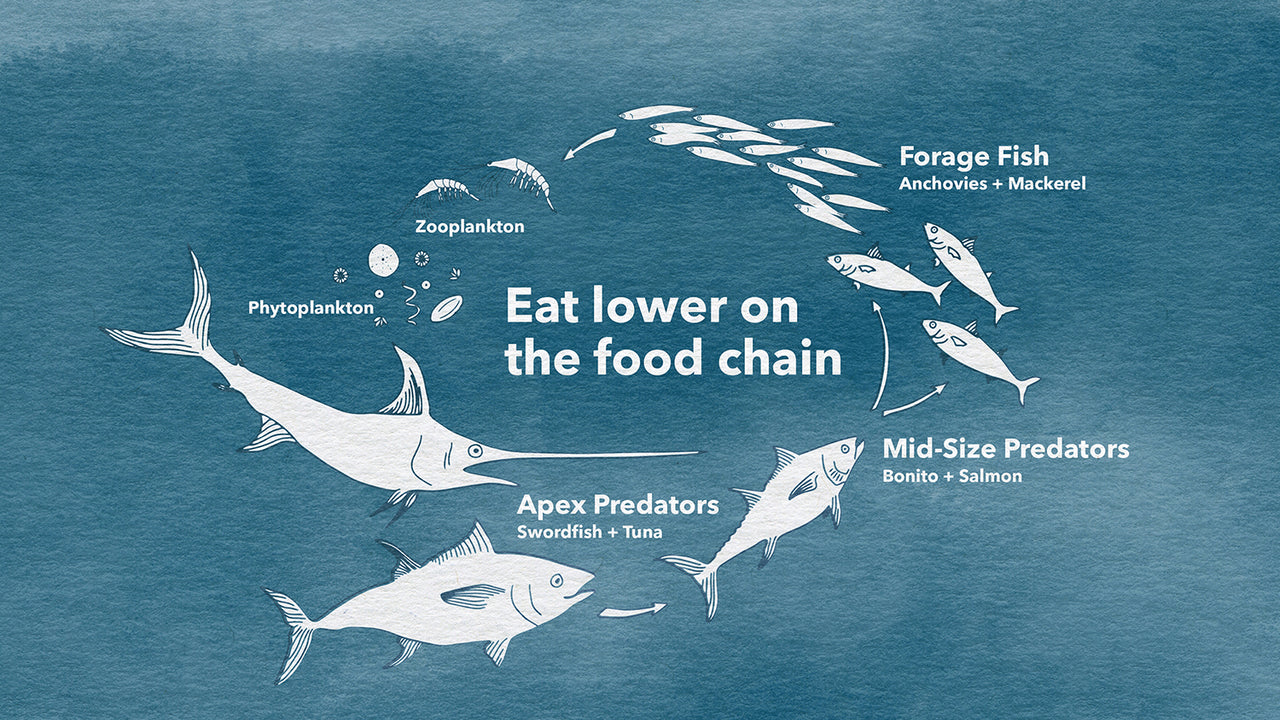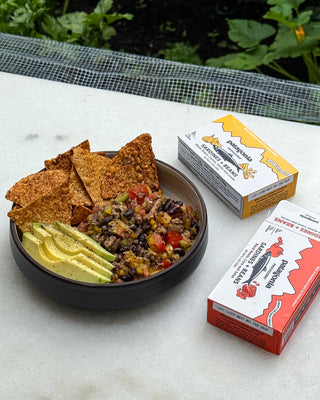Anchovies + Sardines
Our anchovies and sardines are more than just delicious, mild-flavored seafood treats. They support communities of small, family-run businesses, and are easy, nutritious ways to eat lower on the food chain.
 Photo by Amy Kumler
Photo by Amy Kumler
Nutrition: Eat the Bait
Forage fish like anchovies and sardines make eating lower on the food chain delicious and easy. And eating low on the food chain isn’t just better for the planet, it’s better for humans as well. Because these abundant fish have short lifespans and eat a and plankton-rich diet, they don’t accumulate the high levels of toxic heavy metals found in larger fish such as tuna or swordfish. Anchovies and sardines are also an excellent source of protein and calcium. They contain jaw dropping amounts of vitamin B-12 (as much as 560% DV), a nutrient that helps keep both the nerve and blood cells healthy.* In other words, they're everything you love about seafood, only smaller.
*See nutrition information for total fat, saturated fat and cholesterol content.
Sourcing: The Spanish Solution
We harvest our anchovies and sardines from thriving populations off northern Spain, using responsible, small-scale fishing practices. We source from family-owned fishing guilds we know personally and we don’t rely on commodity markets. This guarantees consistency, quality and traceability.

llustration by Ilka Hadlock
Enviro: Why Anchovies and Sardines?
Eating forage fish (aka baitfish), takes pressure off larger, less-abundant species like tuna and swordfish.
Tuna and swordfish are long lived and can’t reproduce quickly—so they can’t withstand the pressures of the global market.. Abundant fish that live lower on the ocean foodchain, like anchovies and sardines, provide a tasty alternative. Their quick reproduction andstrict management make these little fish afully renewable resource.

Photo by Carol Studio
History: The Fishing Guilds of Cantabria
In ancient villages along the Bay of Biscay, in northern Spain, fishermen and processors work together to ensure a healthy future for fish and community alike.
 Photo Courtesy of Good Fish Foundation
Photo Courtesy of Good Fish Foundation
Partners: Guided By Science
We work with Good Fish Foundation, of Veenendaal, the Netherlands, to ensure that Bay of Biscay anchovies and sardines, as harvested by the Cantabrian fleet, remain a truly renewable resource. As one of the few major food companies that work in direct partnership with fish conservation and science organizations, our goal is to find solutions that help protect, rather than deplete, our home planet. Good Fish evaluates the sustainability of fisheries in Europe and works with fishermen, fish farmers, processors and retailers to help seafood buyers make environmentally sound decisions about what to eat. The group also publishes a sustainable seafood guide for consumers, advises chefs, and is working to ensure that by 2030, the Netherlands catches, farms, sells and consumes only sustainable fish.



